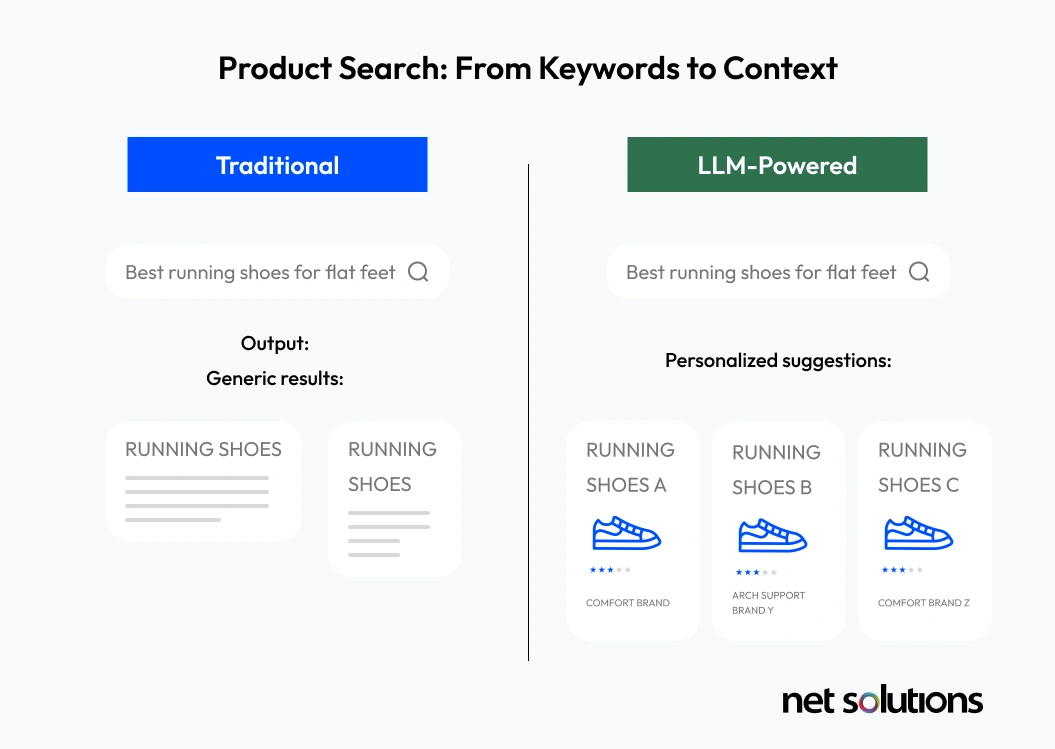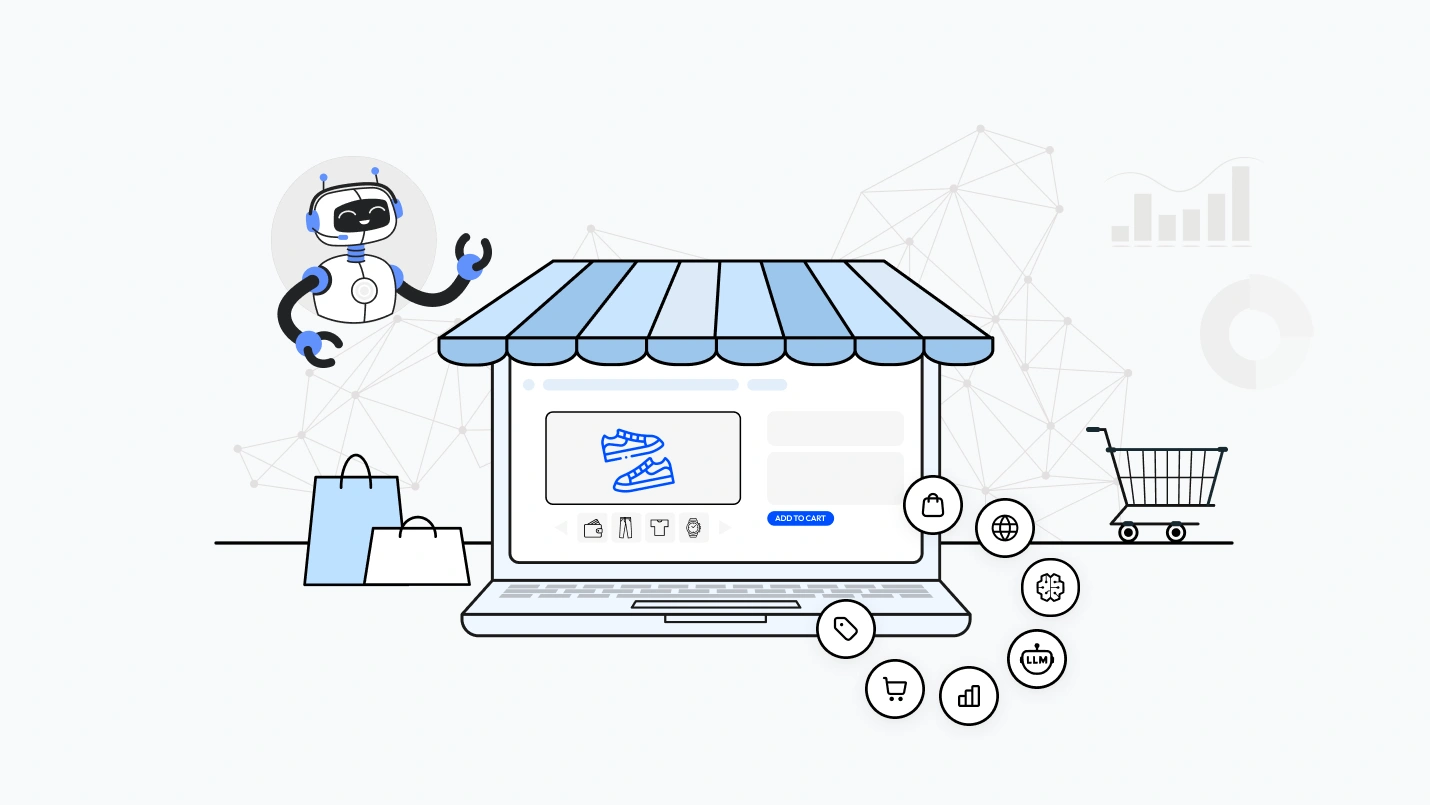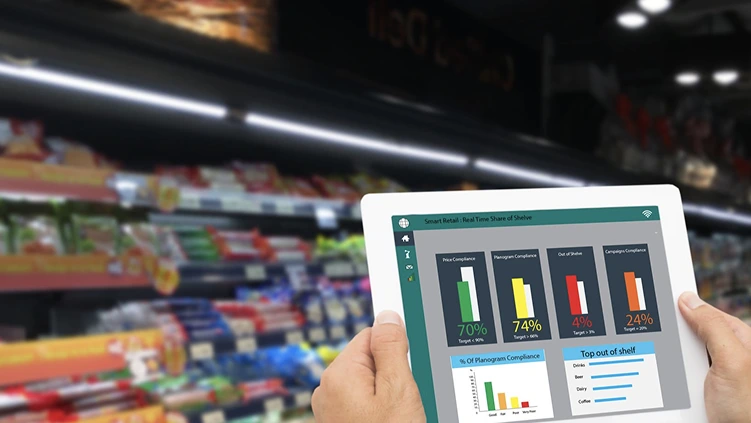Online shopping has become a cornerstone of daily life now. It offers unparalleled convenience, allowing us to browse and purchase a myriad of products without leaving our homes. Yet, this convenience often comes with its own set of frustrations. As consumers, we frequently find ourselves grappling with fragmented experiences. These hurdles stem from e-commerce systems that have not kept pace with modern expectations.
This is where Large Language Models (LLMs) step in, promising to redefine how we discover products online. By seamlessly blending the disjointed tools of search bars, filters, and chatbots into a coherent, conversational journey, LLMs aren’t just enhancing e-commerce; they’re revolutionizing it. So, how do they achieve this?
Understanding the Current Landscape and Its Challenges
Before exploring LLMs’ transformative potential, it’s crucial to understand the limitations of our current systems and why they’re due for an upgrade.
Search Bars: From Innovators to Stagnators
Initially, search bars were a revelation. They allowed us to type in what we wanted and receive a list of potential matches, a significant leap from manually sifting through catalogs. However, with time, the cracks in this system became evident.
The primary issue lies in their reliance on keyword matching. If you type “winter boots for snow,” you’d expect relevant results. But often, if those exact keywords aren’t part of a product’s description, the result page might be underwhelming. Search bars don’t consider the context or the true intent behind queries. Imagine a shopper typing “headphones comfortable for long flights” and receiving results unrelated to comfort, purely due to misaligned keywords.
Further, these search engines treat every user interaction as an isolated incident. There’s little to no personalization. Whether you’re a first-time visitor or a returning customer with a specific buying pattern, the system generates the same results. Reports indicate that 72% of consumers abandon shopping sites if the search experience isn’t up to par. Gojek saw a 20%+ increase in search-to-order conversion using ML-powered personalized search, while Airbnb and Etsy reported higher engagement and purchase rates from machine learning ranking models (Source: AWS).
It’s not just about losing a sale; it’s about creating a barrier between the consumer and their desired product. This lack of context-awareness in search is one reason eCommerce leaders turn to custom AI-powered search solutions that personalize discovery across channels.

Filters: Tools of Precision or Overwhelming Labyrinths?
Filters should simplify decision-making by allowing users to refine product searches by various attributes. They’ve become a staple feature for narrowing down choices in vast product inventories. However, these filters often miss the mark.
Why? They’re usually rigid and static, pre-determined by the retail platform without adapting to nuanced shopper needs. A search for “eco-friendly water bottles with a straw” might yield an overwhelming list without the option to refine by sustainability features or lid type. When shoppers can’t find the filters they need, it leads to “filter fatigue,” where users toggle through endless options without getting closer to what they want.
Compounding this frustration is the all-too-familiar “zero results” page, which looms when filters are too restrictive. These dead ends can cause users to backtrack, adjust, and try again, often losing patience in the process. It echoes the “No Results Found” frustration from search bars.
Finally, collaborative filtering often underlies recommendation systems and brings more challenges. While popular items get pushed to more users, lesser-known or new products languish in obscurity due to the “cold start” issue: lack of data means poor recommendations, reducing inventory diversity over time.
Chatbots: Automated Helpers with a Limiting Framework
When chatbots entered the e-commerce space, they were heralded as the next step in customer service evolution. Operating around the clock, they promised instant responses for general inquiries. However, their script-based nature quickly became apparent.
Imagine asking a chatbot about eco-friendly dishwasher detergents, only for it to give canned responses about detergent brands without sustainability credentials. When faced with specific, unscripted questions, these chatbots can become more of a hindrance than a help. They also struggle with scalability. As product catalogs expand, updating chatbot scripts becomes cumbersome, causing them to function as bottlenecks in rapidly changing marketplaces.
Redefining the Landscape with LLMs
Given these challenges, how do LLMs step up to address them?
Revolutionizing Search: Understanding Intent, Not Just Keywords
LLMs allow e-commerce platforms to transition from keyword-dependent searches to understanding the full context of queries. Through Natural Language Understanding (NLU), they grasp the words typed in and the intent and sentiment behind them.
Imagine you’re looking for “comfortable shoes for standing all day.” An LLM-powered search doesn’t just hunt for keyword matches but understands the significance of “comfortable” and “standing all day.” This context-aware retrieval radically changes the search outcome, elevating relevance and accuracy. Throw in a typo or synonym, and the system can seamlessly adjust, ensuring the user experience remains fluid.
Beyond improving baseline search results, LLMs encourage hyper-personalization. Integrating user data like browsing history and previous purchases, they cultivate a shopping experience tailored to individual tastes and behaviors. For example, an individual who frequently checks out eco-friendly products might see those promoted in their search results, delighting the user and driving brand loyalty.
Transforming Filters into Dynamic, Conversational Partners
With LLMs, filters evolve beyond static dropdown menus. Advanced semantics allow for the creation of dynamic filters based on real-time data and interactions. For instance, if you search for “lightweight hiking backpacks with hydration reservoirs,” an LLM understands that you care about weight, utility, and capacity, and can present filters to match those priorities.
Moreover, LLMs enable conversational filtering. Forget clunky sidebars; imagine interacting with the system like you would with a knowledgeable store assistant. “I’m planning a camping trip and need a tent for rain” can prompt the AI to suggest heavyweight waterproof options while asking for other preferences in a dialogue-style interaction.
This transition from rigid mechanism to dynamic conversation streamlines the path from search to purchase, keeping users engaged and less frustrated. Dynamic filtering also reduces on-page clutter, providing a cleaner and more enjoyable shopping experience.
Elevating Chatbots into Intelligent Shopping Assistants
With LLMs at their core, chatbots are no longer bound by static scripts. They transform into sophisticated assistants capable of engaging in fluid, human-like conversations. These bots recognize and respond to natural language cues, guide decision-making processes, and even perform multi-turn dialogues, remembering past interaction contexts.
For instance, if you ask a chatbot to “recommend sustainable fashion brands,” an LLM-powered system will drill deeper and not just list options. Do you mean organic materials? Fairtrade-certified? Eco-friendly dyes? It offers suggestions and dynamically adjusts based on further input, refining recommendations beyond initial prompts. Interacting with LLM-driven chatbots feels less mechanical, more akin to consulting with a knowledgeable personal shopper.
These AI assistants continue learning from each interaction, refining their understanding. They can also preemptively resolve common queries, reducing cart abandonment by addressing common stumbling blocks during checkout. This enhances customer satisfaction and can proactively increase average order values via tailored upselling.
Towards a Unified Shopping Experience
The integration doesn’t stop at improving individual components. By harnessing LLMs, e-commerce can move to the next level – a singular, holistic interface that blends search, filters, and chatbot functionalities.
Consider the “Intent Box” – a central hub built into the user experience. Far from being a siloed virtual assistant, this tool interprets user intention in real time, offering recommendations, advice, and information all from one place. LLMs enable this seamless unification, tailoring everything to user needs without the friction of bouncing between different systems.
Imagine browsing a virtual mall, starting with a voice command on your phone, following product suggestions on your laptop, chatting through specifics with an AI assistant, and completing checkout autonomously on a smart device. This fluidity embodies the essence of “Conversational Commerce,” transforming buying into an engaging dialogue.
The Advantages of a Unified Interface
Embracing LLMs and achieving a unified product discovery experience offers tangible benefits for consumers and retailers alike.
Seamless Customer Journeys
The transition from fragmented tools to a seamless interface creates a consistent narrative for consumers. Whether transitioning from desktop to mobile or switching from browsing to consulting, every touchpoint is interwoven into a single, coherent experience. This continuity reduces friction and enhances satisfaction, making shoppers feel understood and valued.
Personalization at its Peak
Thanks to LLMs, e-commerce experiences are no longer generic. Shopper interactions dynamically adjust to reflect individual preferences and behaviors. A frequent buyer of organic skincare products might notice those brands prominently featured across platforms. Such depth of personalization creates a sense of special attention, fostering brand loyalty.
Efficiency and Operational Gains
For retailers, LLM-driven systems streamline administrative processes, easily handle vast volumes of customer interactions, and prevent escalations of routine inquiries.
As a result, human staff can focus on complex queries while the AI manages daily activity, offering significant cost savings and improved operational efficiency. You can explore how AWS Bedrock enables these GenAI-powered capabilities across real business scenarios.
Increased Conversion Rates and Sales
Real-time engagement, personalized prompts, and smooth discovery pathways strongly influence purchasing behavior. Statistic-driven designs illustrate an uplift in conversion rates, suggesting implementations of conversational strategies can boost them by as much as 30%. Proactively resolving common issues during checkout significantly reduces abandoned carts.
Enhanced Discovery and Reduced Fatigue
Shoppers avoid the “paradox of choice” seen in traditional models by simplifying filters and using AI-driven suggestions. Decision fatigue declines as LLMs proffer highly relevant recommendations, enabling users to navigate product catalogs easily. The pleasurable experience compels return visits, nurturing ongoing engagement.
A Glimpse into the Future: Shopping Reimagined
The possibilities unlocked by a unified interface are staggering. Envision an e-commerce world where AI serves not just as an assistant but as a co-pilot throughout shopping adventures.
Augmented and Virtual Realities
Imagine stepping into an interactive virtual world where AI-guided shopping assistants contextualize offerings, suggest products, and provide styling tips. Dress virtually, visualize home setups, and receive immediate feedback without barriers, distances, or delays.
Holistic Immersive Experiences
Extend this to AR-powered shoe try-ons or VR-enhanced furniture spaces. Blending real-world elements with digital enhancements captivates users and reshapes e-commerce into an immersive journey rather than a static transaction.
Conclusion: The Dawn of Intuitive E-commerce
The era of segmented online shopping, marked by rigid systems and impersonal touches, is drawing to a close. Driven by revolutionary Large Language Models, a new paradigm of e-commerce emerges, characterized by unified, intelligent, and conversational interfaces.
For retailers, embracing this convergence isn’t optional; it’s a strategic imperative to stay relevant and competitive. By investing in unified product discovery experiences, brands secure their future and delight consumers.
The message is clear: Shoppers want intuitive journeys, personalized interactions, and a seamless bridge between what they need and what they find. With LLMs at the core, the evolution of e-commerce is inevitable, making the act of shopping more than just a task – it becomes an engaging, fulfilling adventure into the digital world.



